Visiting a Katana Swordsmith
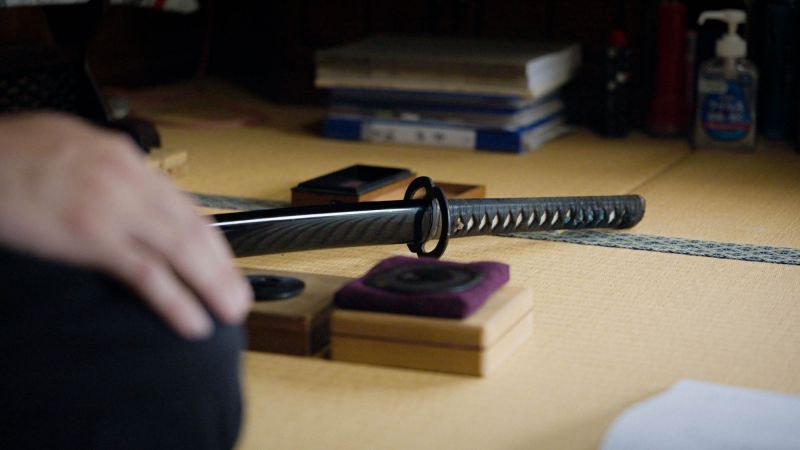
Today, I had the opportunity to partake in some rare experiences.
There is a katana swordsmith deep in the mountains of Kumano, who offers tours of his workplace and shares his knowledge about the katana making process. This tour is said to be quite rare and we weren’t sure if we could participate until the day before.
Furthermore, I also got to stay in a 60 year old traditional Japanese countryside home, fully renovated into a huge accommodation. Staying here was also a rare, unique experience and somewhere that I normally wouldn’t be able to experience.
Today is a day full of rare opportunities to learn and experience Japanese tradition and I was more than ready to start the day.
Stopping by the Fish Market in Owase
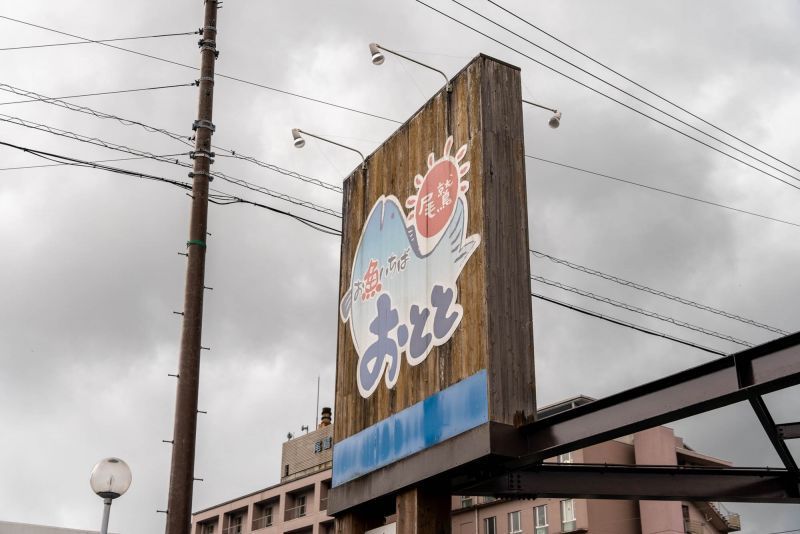
I stayed in the small town of Kihoku, which is about 2-3 hours away from Kumano. We left for the swordsmith’s tour late in the morning and stopped by Owase for lunch, at a popular spot called the Owase Ototo Fish Market.
Owase is locally famous for seafood and this place is part of a roadside station that has some of Owase’s finest produce. As the name says, Ototo is mainly fish , so you can find souvenirs all kinds of fish and seafood souvenirs.
In the back of the market is a restaurant, where we went to eat lunch.
Owase is locally famous for seafood and this place is part of a roadside station that has some of Owase’s finest produce. As the name says, Ototo is mainly fish , so you can find souvenirs all kinds of fish and seafood souvenirs.
In the back of the market is a restaurant, where we went to eat lunch.
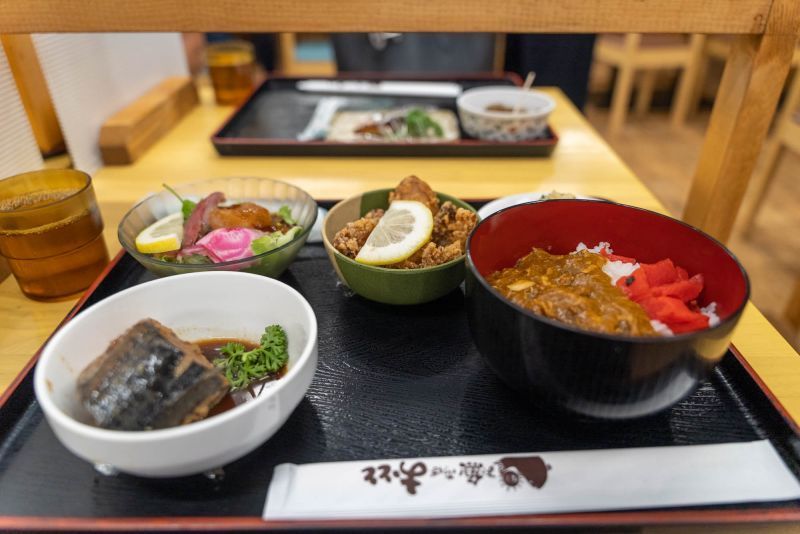
The restaurant was cafeteria style, where you walk along a single file line through different sections of various seafood cuisines. Tray in hand, I started picking out all the dishes that I wanted to try.
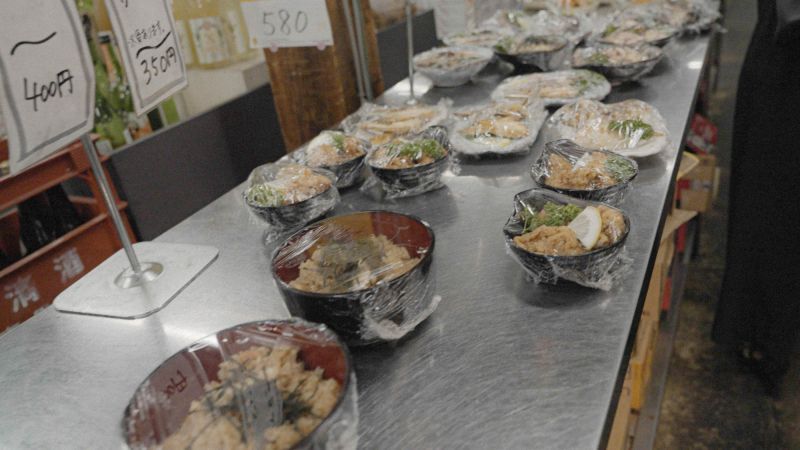
There were so many options to choose from and it was interesting because there were seafood variations of all kinds of Japanese food. Everything from curry, all the way down to the white rice itself, had some sort of seafood infusion.
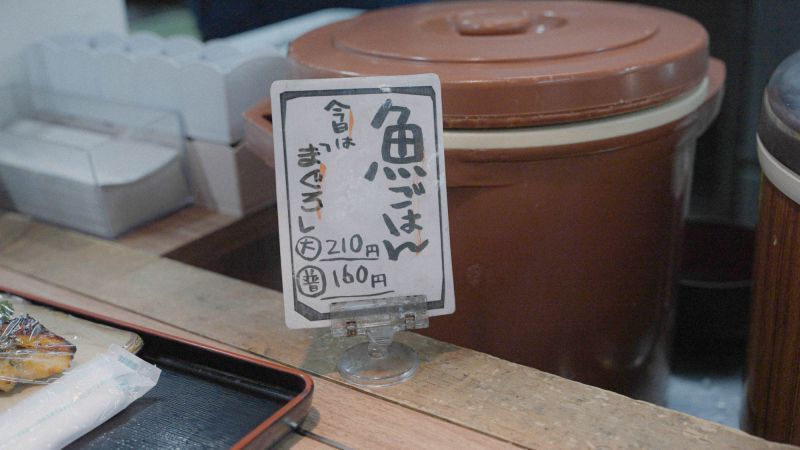
I didn’t hold back and ended up grabbing more than I had originally planned on eating.
The Mountainside of Kumano
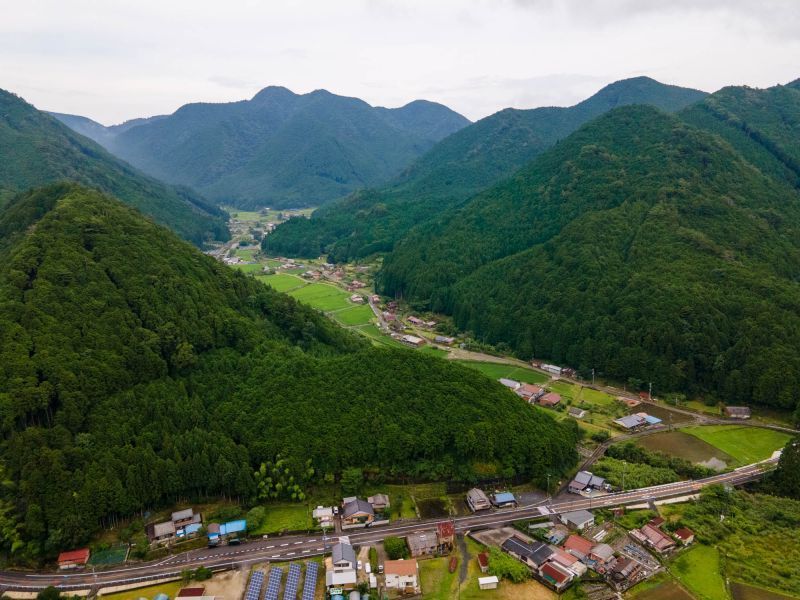
After a hefty lunch and several hours of driving, we finally arrived at the mountainside of Kumano. We arrived at a rural hillside with spaced out houses, weak phone signals, and trees surrounding the entire area, the full countryside experience.
There were also deers on the other side of the hill, staring at us as we parked the car.
There were also deers on the other side of the hill, staring at us as we parked the car.
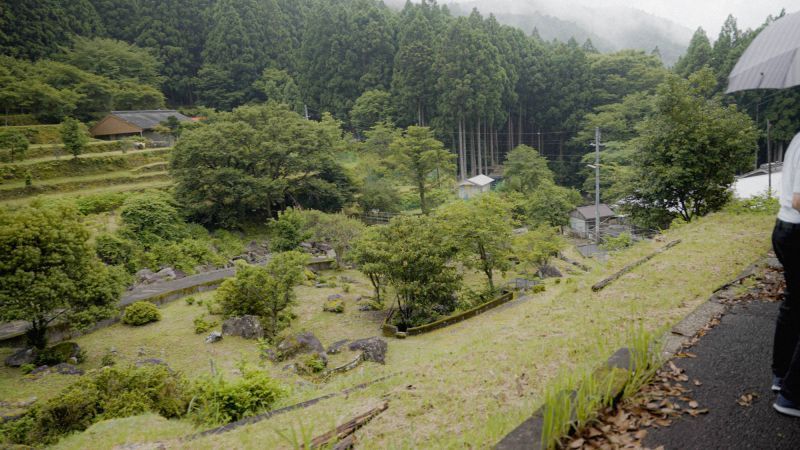
From the parking lot, it was another 15 minutes by foot to get to the house.
The path started out as a normal hillside route, but we made a turn into an area completely surrounded by trees. The trees were so tall, they were blocking nearly all of the sunlight and there was moss all around the concreted pathway.
The path started out as a normal hillside route, but we made a turn into an area completely surrounded by trees. The trees were so tall, they were blocking nearly all of the sunlight and there was moss all around the concreted pathway.
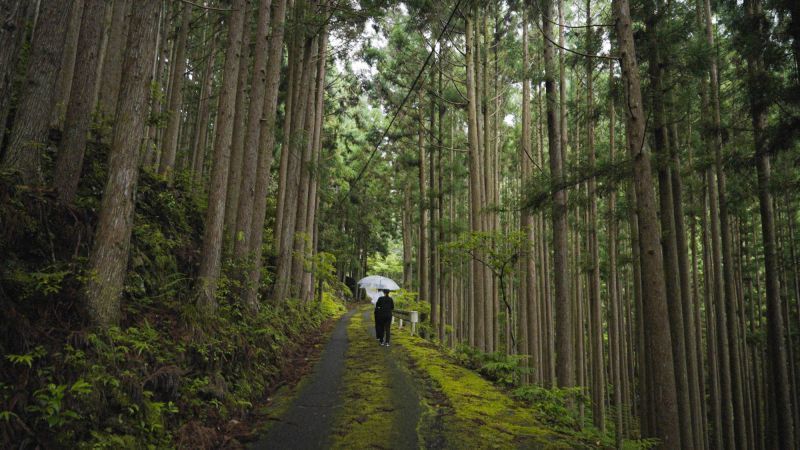
The air was really fresh and it felt like we were walking through an ancient road like the Kumano Kodo.
Arriving at the Swordsmith’s House
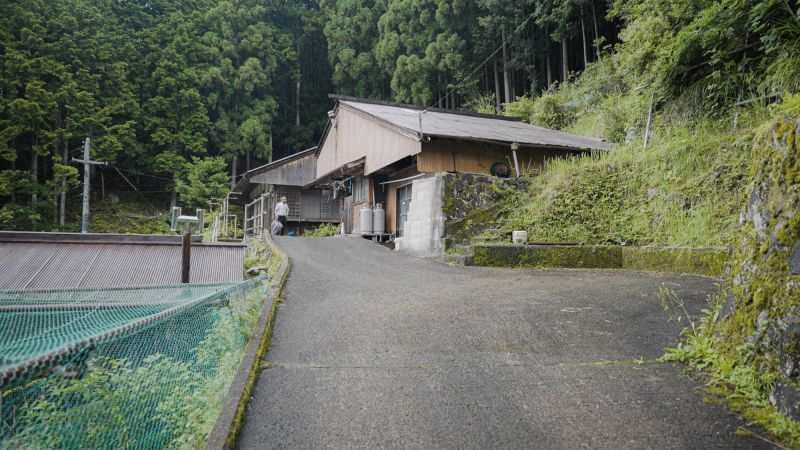
Once we cleared the shaded path, the view opened up and on top of the hill was our destination, a big, slightly run down traditional countryside house.
We met the swordsmith at the front door and after doing some introductory greetings, he led us into the guest room to start the tour.
We met the swordsmith at the front door and after doing some introductory greetings, he led us into the guest room to start the tour.
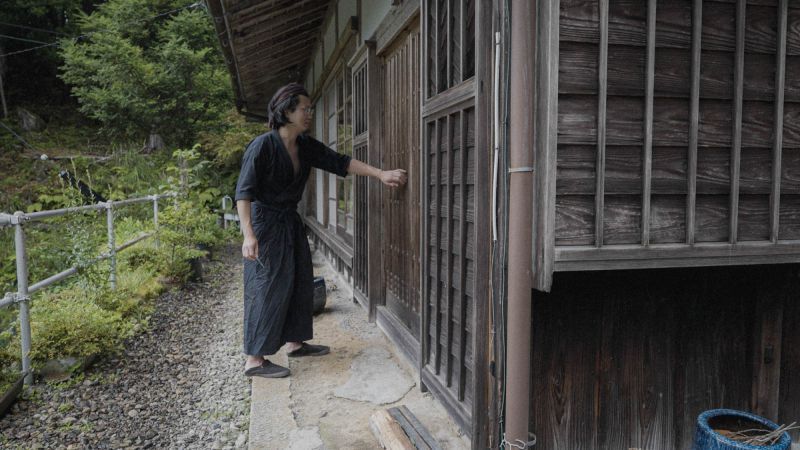
The guest room was a small Japanese washitsu room with paper sliding doors and tatami mats. There were 2 katanas on a stand on one side of the room and another corner had old photos, books, and a corded telephone.
The room had no signs of technology and feels like we’ve traveled back at least 20 years in time. We were offered some green tea and the tour began with an explanation of the basics of a katana.
The room had no signs of technology and feels like we’ve traveled back at least 20 years in time. We were offered some green tea and the tour began with an explanation of the basics of a katana.
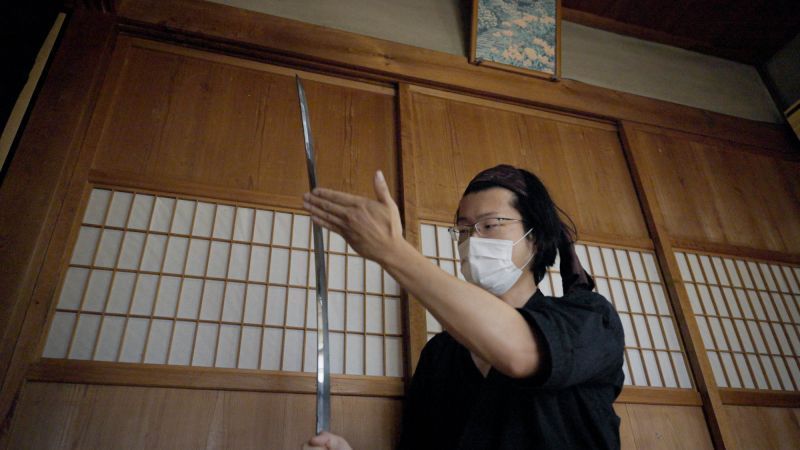
I’m not an expert but I knew the basic process of making a katana: heat up a piece of metal and fold it a billion times to make it sturdy and really, really, really sharp.
The swordsmith’s explanation was less about the process of making a katana and more about how to tell different swords apart, which was quite interesting.
Apparently there are 3 areas to distinguish a katana: the handle, guard, and the blade pattern. Every katana has its own designs in these parts and you can even identify which era the katana was forged in just by looking at it.
The swordsmith’s explanation was less about the process of making a katana and more about how to tell different swords apart, which was quite interesting.
Apparently there are 3 areas to distinguish a katana: the handle, guard, and the blade pattern. Every katana has its own designs in these parts and you can even identify which era the katana was forged in just by looking at it.
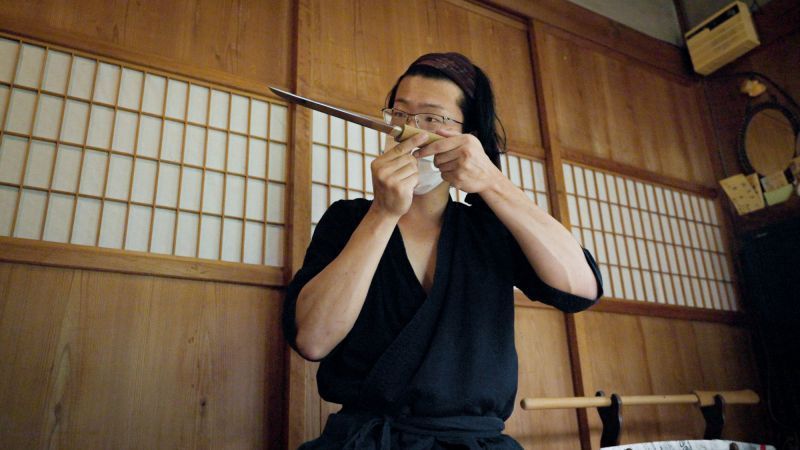
We were first taught how to identify the blade pattern: reflect a light source through the blade and look really really carefully.
The blade pattern isn’t visible when looking straight at a katana but once I tried this, there were some interesting patterns and intricate details all over the blade.
At first, it looked like water stains, but the patterns were quite intricate and seemed to resemble bark patterns on a tree.
The blade pattern isn’t visible when looking straight at a katana but once I tried this, there were some interesting patterns and intricate details all over the blade.
At first, it looked like water stains, but the patterns were quite intricate and seemed to resemble bark patterns on a tree.
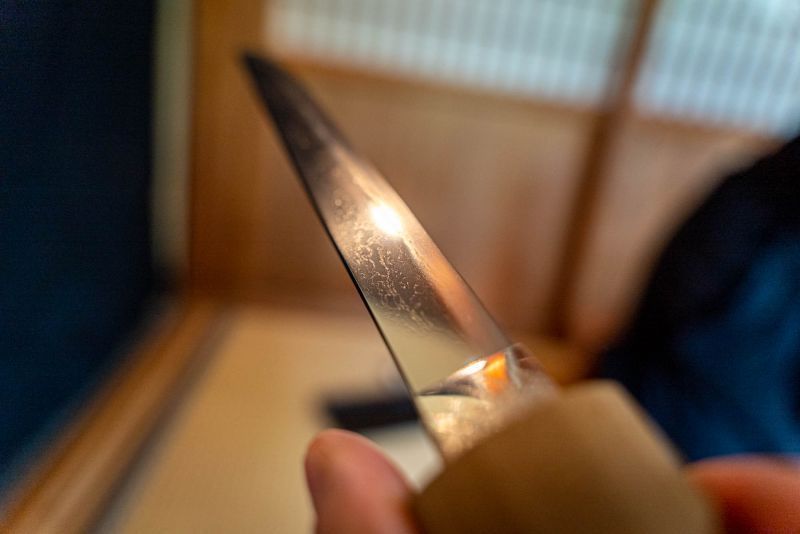
The swordsmith then brought out some katana guards to show us the different designs made in different periods. There were all kinds of designs from simple to extremely intricate but they all had one thing in common: they were all very heavy.
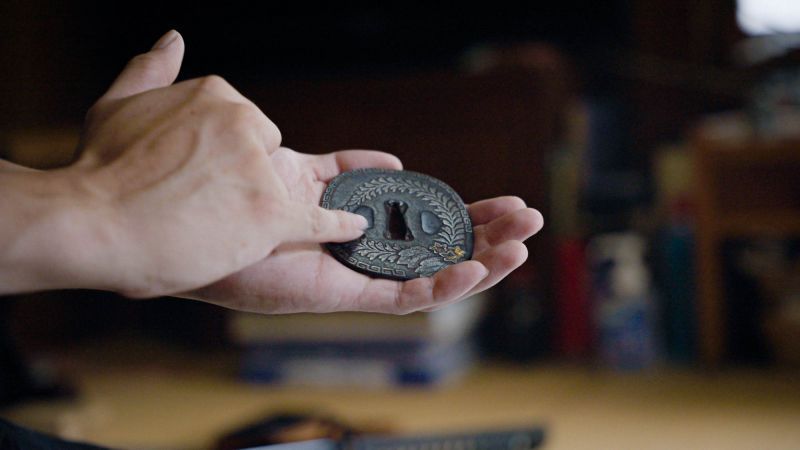
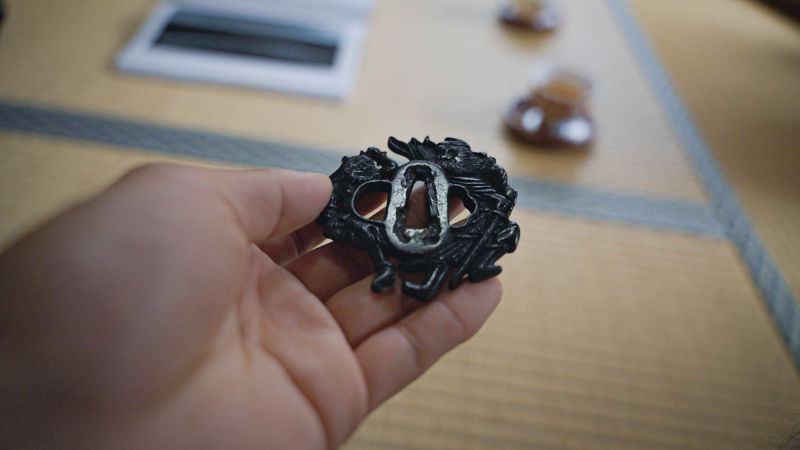
It was interesting to see the amount of detail that’s put into the katana and to see how there was also an aesthetic trend that developed and changed throughout time.
A Look Into the Workshop
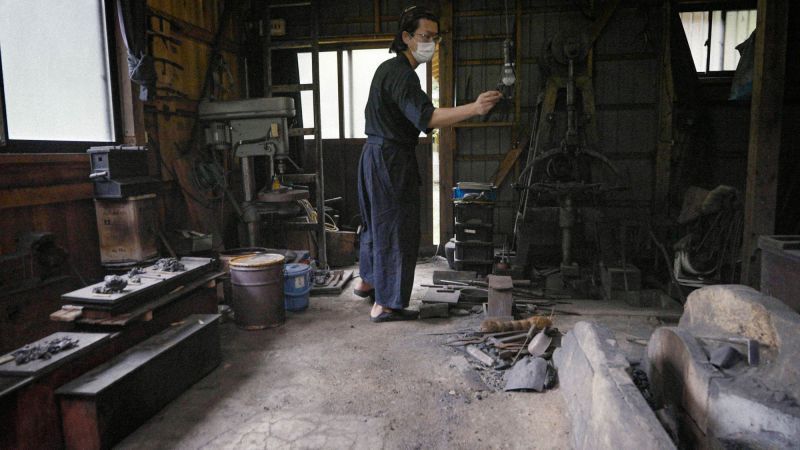
After the explanation, we got to go down to the workshop and take a look inside.
The workshop was a small hut one story down the hill, right below the guest room. We walked inside this dark, dusty room with equipment and materials all around the sides of the room.
The workshop was a small hut one story down the hill, right below the guest room. We walked inside this dark, dusty room with equipment and materials all around the sides of the room.
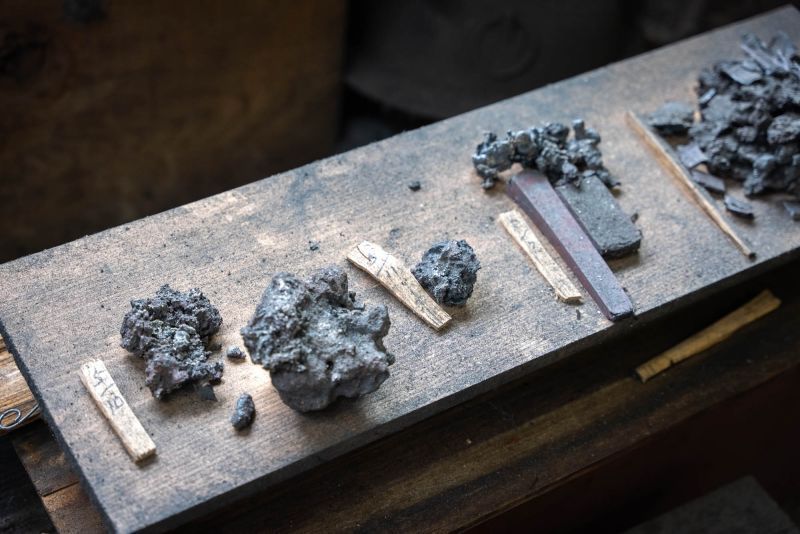
Towards the wall side were the big tools used in the katana process while the window side had rows of different rocks with labels. It seemed like there was lots of stuff going on at the same time. They say that you can tell a person's lifestyle by looking at their room and you can definitely tell the amount of hard work our swordsmith puts into his career.
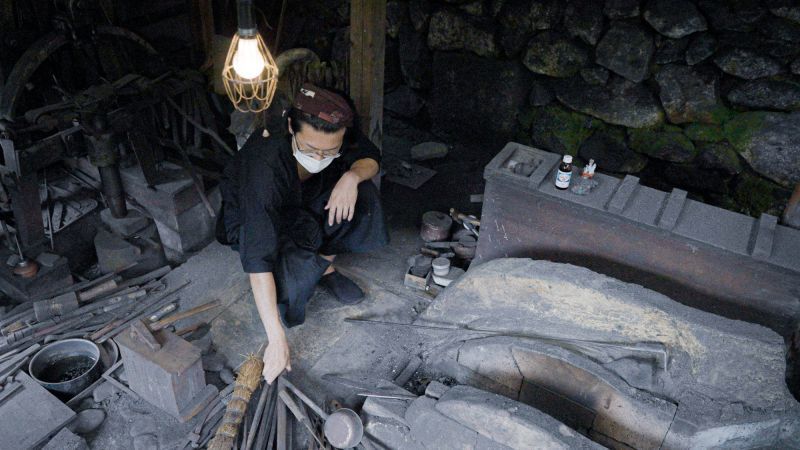
The swordsmith proceeded to give us a small walk through of the forging process. He started off by handing each of us a metal rock, which is what is used to make the katana.
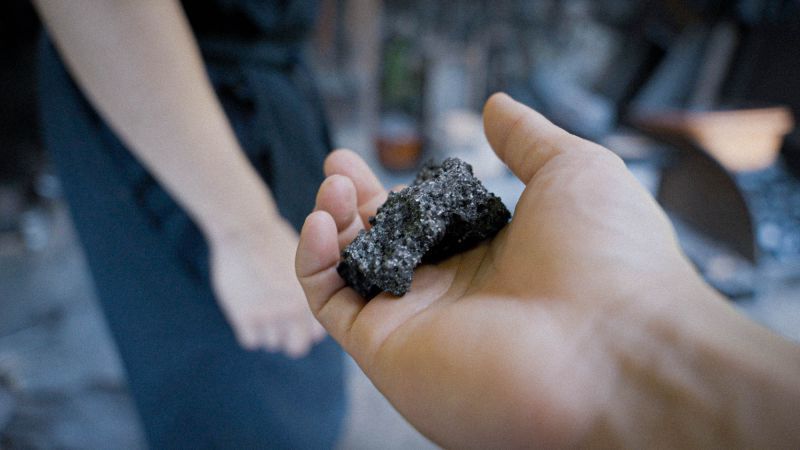
Then he brought out a bucket full of black sand, which is the same material as the rock, just in a different form. It felt really soft and felt just like sand. In fact, he actually acquired this black metal sand by processing through normal sand, which you normally find at the beach.
Who knew that the raw elements of a katana were so easily obtainable!
Who knew that the raw elements of a katana were so easily obtainable!
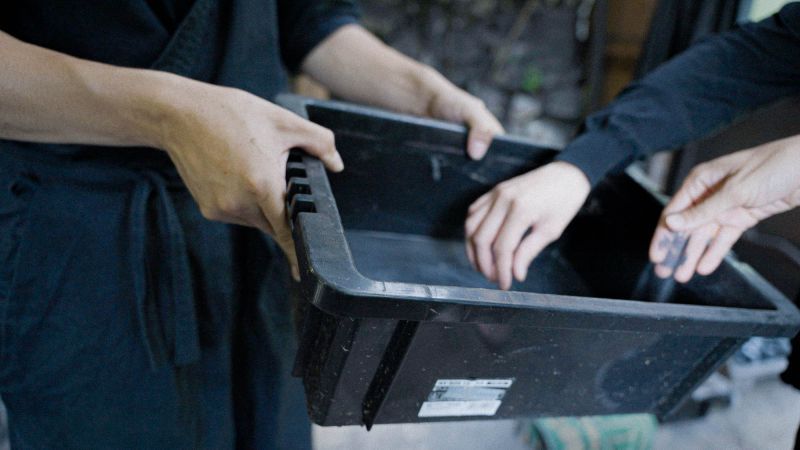
The ores and sand are melted in the furnace, heated to an intense degree, and the resulting liquid is poured out into a rectangular mold. Through this process, not only does the metal liquify, but it also purifies the material, combusting away any unwanted elements and only leaving behind the strong metal elements.
This thick rectangular block of metal is then bent and flattened about 15-20 times over the course of several weeks to create the strong, durable properties of a katana blade.
This thick rectangular block of metal is then bent and flattened about 15-20 times over the course of several weeks to create the strong, durable properties of a katana blade.
Times have changed and obviously the use of katana has significantly decreased (at least I hope it has). Therefore our swordsmith rarely forges actual katanas. Instead, he forged variations, such as harpoon blades, high quality knives, and other practical forms.
Regardless of the form, the tradition of katana making is not forgotten, it has just taken a different form.
Regardless of the form, the tradition of katana making is not forgotten, it has just taken a different form.